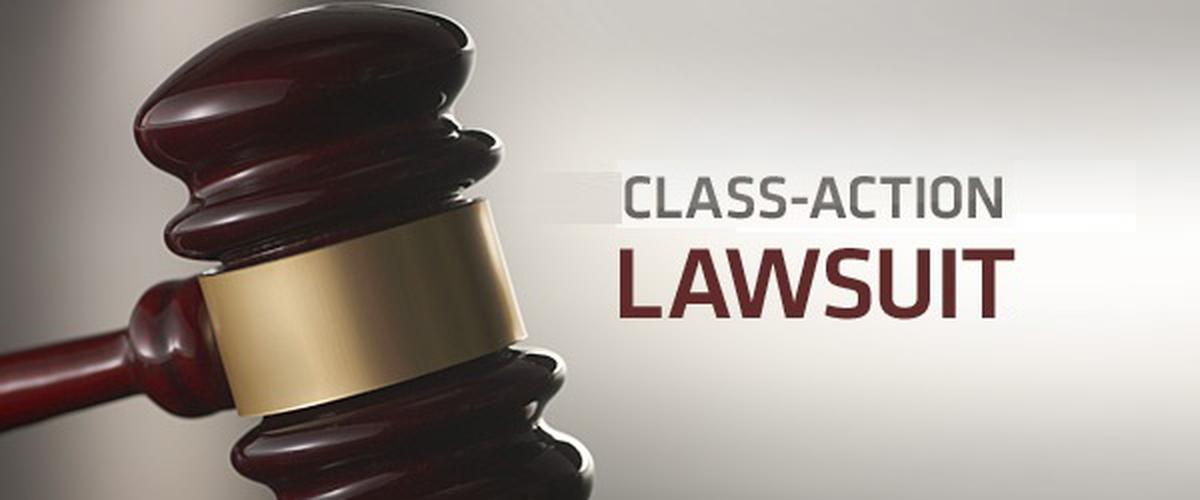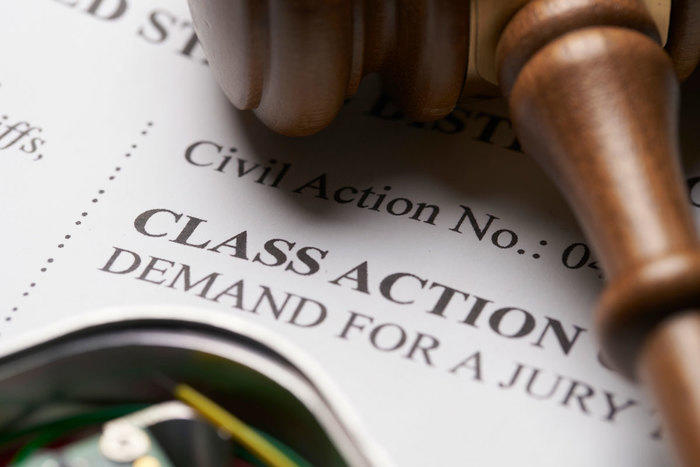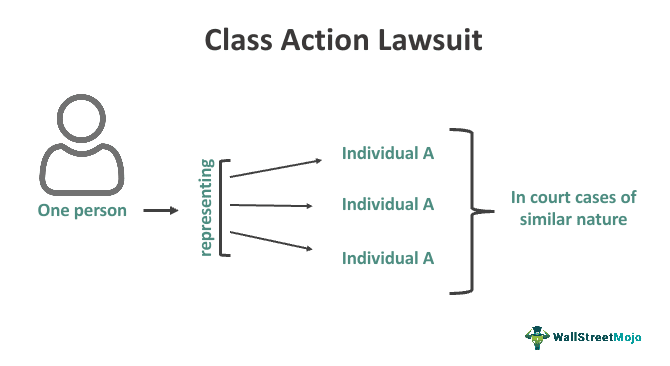Recognizing Your Civil Liberties: A Comprehensive Overview to Class Action Lawsuits
Wiki Article
Recognizing Class Action Suit: A Guide for Attorney
Class action lawsuits have actually come to be an integral part of the lawful landscape, permitting the combination of multiple cases into a solitary activity. For legal representatives, comprehending the intricacies of class activity lawsuits is critical in effectively representing their clients. This extensive guide discovers the principles of class action lawsuits, from recognizing prospective class participants to browsing the accreditation process. In addition, it explores key approaches for taking care of class activity lawsuits and offers understandings into acquiring and working out authorization for settlements. By delving right into the complexities of course activity lawsuits, this overview gears up lawyers with the expertise and tools needed to efficiently navigate this intricate location of legislation.The Fundamentals of Course Activity Suits
Course activity lawsuits are a legal device employed to consolidate comparable insurance claims from a group of people right into a solitary suit, giving a cost-effective and effective technique to looking for justice and resolution. This type of suit enables a depictive complainant, acting upon part of the entire class, to bring an insurance claim versus an accused that has actually presumably triggered damage or went against the civil liberties of multiple individuals.The standard requirements for bringing a course activity suit include numerosity, commonness, typicality, and competence of representation. Numerosity refers to the reality that the course must be so large that joinder of all members would certainly be impractical.
Class action lawsuits can be beneficial for both defendants and complainants. For offenders, it supplies the opportunity to efficiently fix several claims in a solitary suit, avoiding the need to safeguard against many private lawsuits.
Identifying and Assessing Prospective Course Members
After establishing the basic requirements for a class action suit, the following action is to identify and examine possible course participants. If they satisfy the needed standards., this procedure involves determining who may be part of the class and examining their insurance claims to figure out.To recognize possible course participants, legal representatives generally carry out substantial research study and collect relevant details. This might entail assessing records, performing meetings, and taking a look at documents to determine individuals or entities that may have been affected by the claimed misbehavior. It is critical to develop a detailed and clear listing of prospective class participants to make certain that all influenced events are consisted of in the suit.
When potential course members have actually been determined, the next action is to evaluate their claims. This entails assessing the benefits of each specific insurance claim to determine if they fulfill the legal demands for class qualification. Attorneys should carefully assess the truths, proof, and legal theories of each prospective course member's case to ensure that they have a feasible case.
Examining potential class participants additionally involves figuring out whether they fulfill the class meaning and have actually suffered similar injury as an outcome of the defendant's activities. This calls for comparing the realities and scenarios of each possible course member's circumstance to the accusations and lawful concepts put forth in the suit.
Browsing the Course Qualification Process
To successfully navigate the course qualification procedure, legal representatives should carefully abide by the step-by-step needs stated by the court. Class certification is an important action in a course activity legal action, as it determines whether a case can proceed as a class action, representing a team of people that have comparable cases versus an accused. The procedure involves pleasing details requirements, such as numerosity, commonality, typicality, and adequacy of representation.To start with, legal representatives must develop numerosity by demonstrating that the course is so huge that individual joinder is impractical. This calls for an extensive analysis of the defenses and insurance claims involved.
Following, lawyers have to show typicality, which implies that the depictive complainant's claims are regular of the insurance claims of the course members. This ensures that the passions of the representative complainant align with the passions of the class. Last but not least, attorneys have to demonstrate competence of representation, suggesting that the representative complainant and their guidance will rather and effectively represent the rate of interests of the course.
To browse this process efficiently, attorneys must completely prepare by performing extensive research study, collecting proof, and establishing an engaging disagreement that satisfies each of these requirements. They must also be prepared to react to any challenges or objections elevated by the accused. By vigilantly adhering to you could try this out the step-by-step needs stated by the court, lawyers can raise their opportunities of acquiring course accreditation and advancing the interests of the course members.

Trick Techniques for Managing Class Activity Lawsuits
Upon effectively browsing the class accreditation process, lawyers have to then execute essential approaches for properly taking care of class activity lawsuits. These strategies are vital to make sure that the situation continues smoothly and efficiently, inevitably making the most of the opportunities of a positive end result for the course participants.
One trick approach is to develop a natural and strong legal group (Class action lawsuit). This involves putting together a group of attorneys with know-how in course activity lawsuits, as well as other appropriate locations such as the particular market or topic entailed in the situation. A well-rounded group can bring various perspectives and skills to the table, enhancing the general effectiveness of the lawsuits
One more important strategy is to create a extensive and well-thought-out litigation plan. This plan needs to lay out the total objectives of the case, as well as the specific legal theories and arguments that will certainly be pursued. It should additionally include a timeline and budget click for more info to ensure that the instance remains on track and within the allocated resources.
Additionally, legal representatives must actively involve with the course members throughout the lawsuits process (Class action lawsuit). This includes giving routine updates on the progress of the instance, seeking input and feedback from the course members, and resolving any type of issues or inquiries they might have. By fostering open communication and collaboration, legal representatives can develop depend on and assistance amongst the class participants, which can be important in achieving an effective resolution
Working Out Course Action Claims: Negotiation and Authorization
When it concerns clearing up class activity lawsuits, efficient arrangement and acquiring authorization are vital actions in accomplishing a resolution. Course action claims are intricate and involve a lot of plaintiffs, making it crucial to reach a negotiation that is fair and adequate to all events involved.
Once a settlement contract is reached, it needs to be accepted by the court. The court's duty in this procedure is to make certain that the settlement is fair, reasonable, and sufficiently secures the passions of the course participants. The court will certainly think about variables such as the nature of the cases, the toughness of the proof, the prospective healing for the course members, and any type of objections raised by class participants.
Getting court authorization is critical as it gives finality to the negotiation and secures the rate of interests of the class members. It ensures that the negotiation is binding and enforceable, and course participants can obtain their rightful payment.
Final Thought

Class activity claims have come to be an important part page of the lawful landscape, allowing for the consolidation of several claims right into a single activity. Class accreditation is a crucial action in a class activity lawsuit, as it figures out whether a situation can proceed as a class activity, representing a team of individuals that have comparable insurance claims versus a defendant. By faithfully adhering to the step-by-step needs set forth by the court, legal representatives can enhance their opportunities of obtaining class qualification and advancing the rate of interests of the course members.
The court will take into consideration factors such as the nature of the insurance claims, the toughness of the proof, the possible recovery for the class participants, and any kind of objections increased by course participants.
By identifying and analyzing possible class members, attorneys can establish the viability of a class action claim.
Report this wiki page